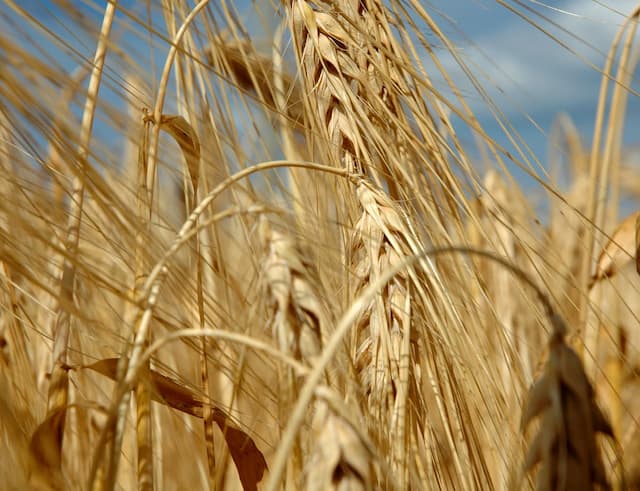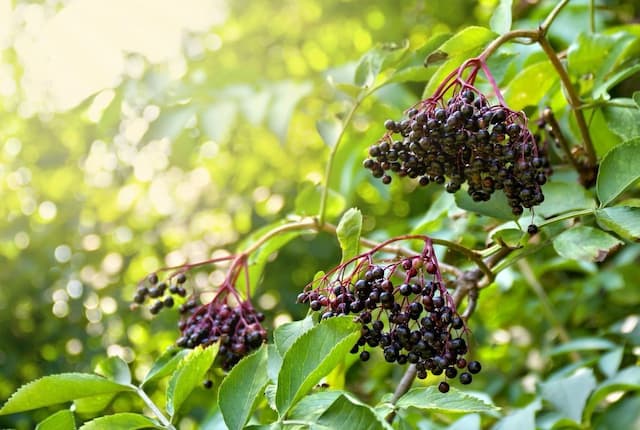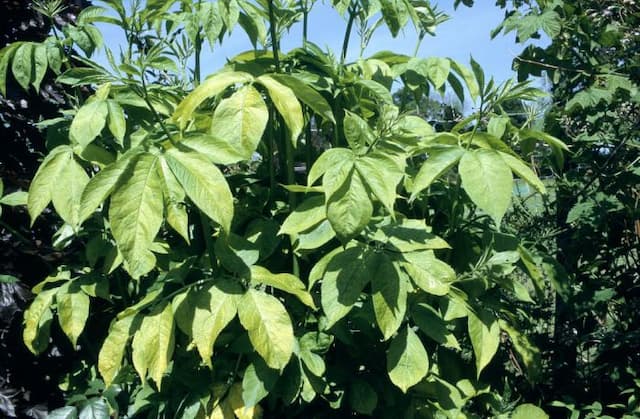Prague Viburnum Viburnum 'Pragense'

ABOUT
The Prague Viburnum, as it's commonly known, is an evergreen shrub with a dense, rounded habit. It boasts glossy, leathery leaves that are dark green on top with a paler underside, creating a striking two-toned effect. In spring, it produces large, rounded clusters of fragrant, creamy white flowers that stand out beautifully against the dark foliage. Following the flowering period, the plant develops small, berry-like fruits that mature to a dark blue-black color, providing visual interest and attracting wildlife. The Prague Viburnum's leaves may take on a subtle maroon to burgundy hue in colder weather, further adding to its year-round appeal.
About this plant
 Names
NamesFamily
Adoxaceae
Synonyms
Prague Viburnum
Common names
Viburnum 'Pragense'.
 Toxicity
ToxicityTo humans
Prague Viburnum is generally not considered toxic to humans. However, as with many plants, some individuals may have sensitivity to it and may experience mild stomach upset if ingested. It is not known for having severe toxic properties or causing significant symptoms of poisoning in humans.
To pets
Prague Viburnum is also not typically regarded as toxic to pets. Similar to its effects on humans, if pets consume this plant, they might experience mild gastrointestinal discomfort, but serious toxicity symptoms are not commonly reported. However, as pets can have varying responses, it is always best to prevent them from eating ornamental plants.
 Characteristics
CharacteristicsLife cycle
Perennials
Foliage type
Evergreen
Color of leaves
Dark green
Flower color
White
Height
10 feet (3 meters)
Spread
10 feet (3 meters)
Plant type
Shrub
Hardiness zones
5
Native area
Central Europe
Benefits
 General Benefits
General Benefits- Evergreen Foliage: Viburnum 'Pragense', commonly known as Prague Viburnum, has lustrous evergreen leaves that provide year-round interest in the garden.
- Privacy Screen: It grows densely, making it perfect for use as a privacy hedge or screen in landscaping.
- Low Maintenance: Prague Viburnum is relatively easy to care for, requiring minimal pruning and upkeep once established.
- Adaptability: The plant is adaptable to various soil types and conditions, making it suitable for many garden settings.
- Pest Resistance: It is generally resistant to common garden pests, reducing the need for chemical treatments.
- Attractive Blossoms: In spring, it produces clusters of fragrant pinkish-white flowers, adding ornamental value to the landscape.
- Berries for Wildlife: The flowers give way to blue-black berries that attract birds and other wildlife.
- Drought Tolerance: Once established, Prague Viburnum can cope with periods of drought, making it a good choice for xeriscaping or low-water gardens.
- Winter Interest: The evergreen leaves and the berries provide winter interest when most other plants are dormant.
- Fast Growth: This shrub has a relatively fast growth rate, quickly filling in spaces in hedges or landscape borders.
 Medical Properties
Medical Properties- This plant is not used for medical purposes.
 Air-purifying Qualities
Air-purifying QualitiesThis plant is not specifically known for air purifying qualities.
 Other Uses
Other Uses- Privacy Screening: The dense foliage of Prague Viburnum makes it an excellent natural privacy screen for residential landscapes or to hide unsightly areas.
- Noise Reduction: Planting a hedge of Prague Viburnum along property lines can help dampen traffic noise or other neighborhood sounds.
- Windbreak: The thick branches and leaves of Prague Viburnum can serve as a windbreak to protect smaller plants or to reduce wind speed near buildings.
- Habitat for Wildlife: The Prague Viburnum can provide shelter and nesting sites for birds, as well as food in the form of its berries when they turn black.
- Erosion Control: With its extensive root system, Prague Viburnum can help stabilize soil on slopes and prevent erosion.
- Formal Gardens: Prague Viburnum can be trimmed into formal shapes and hedges, making it suitable for classical garden designs.
- Backdrop for Perennials: Its evergreen presence can serve as an excellent backdrop for flowering perennials, highlighting their colors and forms.
- Seasonal Interest: Prague Viburnum offers seasonal interest in the landscape, from its fragrant spring flowers to its winter berries.
- Frost Resistant: The Prague Viburnum's hardiness makes it a practical choice for gardens in areas with late spring frosts, as it resists damage from cold.
- Photography: Its aesthetic appeal through various seasons makes Prague Viburnum a popular subject for garden photographers.
Interesting Facts
 Feng Shui
Feng ShuiThe Prague Viburnum is not used in Feng Shui practice.
 Zodiac Sign Compitability
Zodiac Sign CompitabilityThe Prague Viburnum is not used in astrology practice.
 Plant Symbolism
Plant Symbolism- Renewal: Viburnum 'Pragense', commonly known as the Prague Viburnum, blooms in early spring, symbolizing new beginnings and fresh starts as nature awakes from winter.
- Protection: With its dense evergreen foliage, the Prague Viburnum is often associated with shelter and protection, offering a haven for birds and wildlife.
- Abundance: The plant's prolific white flowers and later red-to-black berries suggest themes of abundance and prosperity.
 Water
WaterThe Prague Viburnum should be watered deeply, allowing the soil to become moist but not saturated. During the first growing season, it's crucial to establish a deep root system, so water the plant once a week with approximately 1-2 gallons, depending on the soil type and weather conditions. After establishment, this shrub is relatively drought-tolerant and will require less frequent watering, only needing supplemental water during prolonged dry spells. It's always best to check the top few inches of soil for dryness before watering again.
 Light
LightThe Prague Viburnum thrives in full sun to partial shade, so placing it in a location where it receives at least four to six hours of direct sunlight a day is ideal. It can tolerate shade, but flowering and foliage might not be as prolific as when planted in a sunny spot. Make sure it is shielded from harsh afternoon sun in very hot climates to prevent leaf scorch.
 Temperature
TemperaturePrague Viburnum is hardy and can withstand a range of temperatures; it typically grows best in USDA hardiness zones 5 through 8. It can tolerate winter cold down to about -20°F and summer heat up to around 90°F without significant stress. The ideal temperature range for optimal growth is between 60°F and 75°F.
 Pruning
PruningPrague Viburnum benefits from pruning to maintain shape, promote denser growth, and remove any dead or damaged branches. The best time for pruning is late winter or early spring, just before the onset of new growth. Some light pruning can also be done after flowering to shape the plant and to encourage more blooms the following season, as it blooms on old wood. Prune every year or every other year depending on the desired size and shape.
 Cleaning
CleaningAs needed
 Soil
SoilPrague Viburnum thrives best in well-draining soil enriched with organic matter and has a preferred pH range of 5.6 to 6.6. A mix of loam, sand, and compost is ideal to provide the necessary nutrients and drainage.
 Repotting
RepottingPrague Viburnum, being predominantly an outdoor shrub, does not usually require repotting as it is typically planted directly in the ground. However, if grown in containers, repotting every 3-5 years may be necessary.
 Humidity & Misting
Humidity & MistingPrague Viburnum is adaptable to a wide range of humidity levels but prefers average to high humidity, similar to its natural outdoor environment, without requiring any special humidity adjustments.
 Suitable locations
Suitable locationsIndoor
Ensure bright indirect light, moderate watering.
Outdoor
Plant in sun to partial shade, water regularly.
Hardiness zone
5-8 USDA
 Life cycle
Life cycleThe Prague Viburnum, or Viburnum 'Pragense', begins its life cycle when a seed germinates, usually in spring or early summer. After germination, the seedling phase involves initial root and shoot development as the plant establishes itself. As the plant enters the vegetative stage, it develops a robust root system and foliage over several years, growing into a sizeable shrub. The Prague Viburnum then reaches maturity, where it will begin to flower annually, typically in late spring, with fragrant pinkish-white flowers that attract pollinators. Following pollination, the flowers develop into berry-like drupes that mature to a dark color, providing food for birds and wildlife in the autumn. In winter, the evergreen leaves often remain on the plant, although they can sometimes suffer from winter burn in colder climates, and after many years, the shrub will eventually reach the end of its life cycle and die, potentially leaving behind seeds to begin the cycle anew.
 Propogation
PropogationPropogation time
Early Spring
The Prague Viburnum, which is commonly referred to by its botanical name Viburnum 'Pragense', can be propagated most effectively via semi-hardwood cuttings. This method involves taking a cutting from new growth that has begun to harden, typically in late summer. Cut a 4 to 6-inch (10 to 15 cm) segment of stem that includes a few leaves and remove the lower leaves to prevent excess moisture loss. Dip the cut end into rooting hormone to encourage root development and insert the cutting into a well-draining soil mixture. It's important to maintain consistent moisture and provide indirect light until roots have established, after which the young plant can be transplanted to a more permanent location.



![Elder [Black Tower]](/_next/image?url=https%3A%2F%2Fplants-admin.emdemapps.com%2Fimages%2Fplants%2F%2Fimages%2F604b5cad99578.png&w=640&q=75)





